
What is celiac disease?
Celiac disease is an autoimmune disease involving the digestive system wherein the body is allergic to gluten, a protein found in wheat, rye, barley and many other food grains. While resisting gluten in the diet, the immune system of the body damages the lining of the small intestine. This damage prevents the absorption of vital nutrients like fat, calcium, iron, etc. Because of the malabsorption of these nutrients, the patient loses weight, complains of bloating of abdomen and diarrhea. Depriving the body of these important nutrients finally leads to an impaired growth and development. Damage to the intestinal lining also leads to its irritation by the intestinal digestive juices. This leads to pain in abdomen every time the patient eats something. Although there is no known cure for celiac disease, eating gluten free diet can help in preventing the symptoms.

Celiac disease in children
The symptoms of celiac disease may begin even in early infancy depending upon when foods containing gluten are introduced in the diet. Some of the common symptoms of celiac disease in small children include bloating of abdomen, pain, chronic diarrhea, irritability, and weight loss. Such children often appear smaller for age because of failure to thrive. As the children grow older, the commonly seen symptoms include diarrhea or constipation, delayed onset of puberty, reduced height for age, and neurological problems like attention-deficit/hyperactivity disorder (ADHD), difficulty in learning and problem in coordinating different muscles of the body. Such children often complain of headaches. Teeth are often discolored and may have grooves. Almost 75% of such children may be overweight or obese.
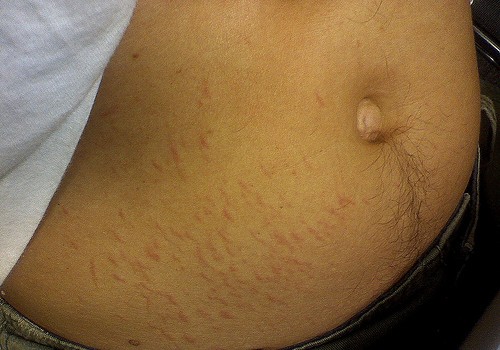
Symptoms of celiac disease
The symptoms of celiac disease vary from patient to patient and according to the age of the patient. In small children, the symptoms of the disease mainly pertain to the digestive system. The child may complain of pain in abdomen, vomiting, constipation, abdominal distension, chronic diarrhea, or foul smelling stools. The child often appears irritable because of poor diet; there may be growth retardation, delayed onset of puberty and dental problems. In adults, the symptoms of celiac disease are usually related to deficiency of vital nutrients. Deficiency of iron may lead to anemia which, in turn, may make the patient lethargic and easily fatigued, deficiency of calcium may lead to bone pain and arthritis, deficiency of vitamin B may lead to tingling numbness of fingers and toes, the patient may suffer from seizures, there may be fertility issues, and a skin rash called as dermatitis herpetiformis.

Who is at risk of developing celiac disease?
Although the exact reasons behind the development of celiac disease have not been comprehended completely, there are some factors which can place a person at high risk. Some of these factors include: • A close family member with celiac disease. It is believed that in at least 5 to 10% of the cases, celiac disease is diagnosed in people who are an immediate family member of a celiac disease patient. • Severe emotional or physical stress in people with a genetic predisposition for the disease can trigger the onset of celiac disease. • Introduction of gluten containing food in the diet of children less than 3 months of age can trigger celiac disease. • Any person suffering from other autoimmune diseases, type 1 diabetes and thyroid disease is at high risk of developing celiac disease. • People with chromosomal anomalies like Down syndrome and Turner syndrome • People with conditions like Sjogren syndrome and microscopic colitis
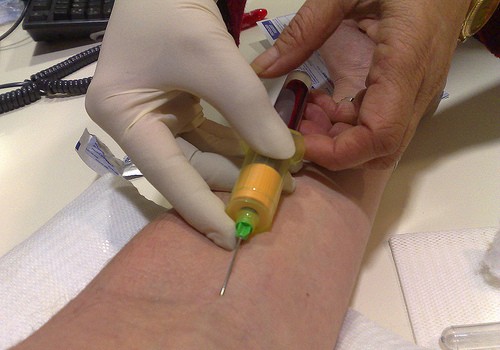
How is celiac disease diagnosed?
Celiac disease can be diagnosed on the basis of several tests. These include: Blood tests: The blood of individuals suspected to be suffering from celiac disease is tested for antibodies like antigliadin (AGA) and endomysium antibodies (EmA). If the test for these antibodies is negative, the patient’s DNA may be analyzed to get an accurate diagnosis. Genetic tests: According to scientists, having a DQ2 gene or a DQ8 gene is a prerequisite for developing celiac disease. People possessing these genes may or may not develop the symptoms of celiac disease depending upon many other factors. However, it has been seen that around one-third of Americans who have these genes are patients of celiac disease. Intestinal biopsy: Biopsy of small intestine with the help of an endoscope can be used to study the characteristic changes seen in celiac disease. These include the destruction of villi and microvilli on the surface of the intestinal lining.

What would happen if celiac disease is left untreated?
There are many times when the people suffering from celiac disease do not have severe symptoms of the disease and hence, the disease is left undiagnosed. As the intestinal lining is damaged, these people are not able to absorb sufficient nutrients. So, as the time elapses, they may develop a host of problems related to deficiency of vital nutrients. These problems include osteoporosis, anemia, neurological problems and infertility. They may develop skin rashes (dermatitis herpetiformis) or rickets. Poor absorption of calcium may also lead to osteopenia and osteomalacia. Chronic malnutrition may lead to a stunted growth and weight loss. It has been seen that the enzyme lactase, which helps in the digestion of lactose present in dairy products, is produced in the cells lining the villi in the small intestine. As celiac disease damages the cell lining, lactase can no longer be produced, leading to lactose intolerance. It has also been noticed that if celiac disease remains untreated for a long time, it increases the person’s susceptibility to develop cancers of the gastro-intestinal tract, like lymphoma.
- Important notification about information and brand names used in this slideshow!
- Photo courtesy of Oceanview MedSpa by Flickr : www.flickr.com/photos/oceanviewmedspa/8122858970/
- www.mayoclinic.org/medical-edge-newspaper-2012/feb-10b.html
- http://celiacdisease.about.com/od/symptomsofceliacdisease/a/complications.htm
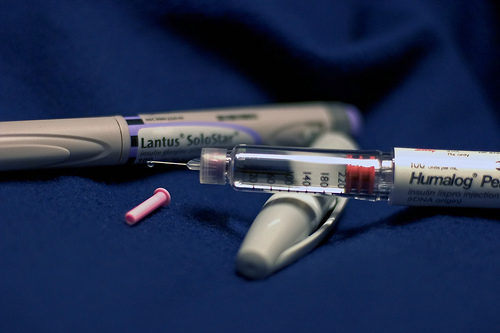
Co-relation of celiac disease with other diseases like osteoporosis and diabetes
Celiac Disease and Osteoporosis We all know that calcium is extremely important for bones. Deficiency of calcium can lead to reduced bone density. In patients of celiac disease, calcium cannot be properly absorbed through the small intestine. Its deficiency may lead to a reduced bone density (osteopenia) and softening of bones (osteomalacia). Chronic calcium deficiency can lead to rickets in children and osteoporosis in adults. Therefore, it is extremely important for patients suffering from celiac disease to undergo bone density scan from time to time and to take regular calcium supplementation. Celiac Disease and Diabetes Almost 3% to 8% of patients of type I diabetes are likely to suffer from celiac disease, as per the data from the National Institute of Diabetes and Digestive and Kidney Diseases (NIDDK). In many of these cases, the symptoms of celiac disease are masked or confused with the symptoms of gastroparesis seen in type I diabetes. In both these conditions, there is swelling or bloating of the abdomen, malabsorption, pain in abdomen and weight loss. Most of the scientists believe that it is the type I diabetes that strikes first and celiac disease develops subsequently. However, another stream of scientists claim that celiac disease...
Celiac Disease and Osteoporosis We all know that calcium is extremely important for bones. Deficiency of calcium can lead to reduced bone density. In patients of celiac disease, calcium cannot be properly absorbed through the small intestine. Its deficiency may lead to a reduced bone density (osteopenia) and softening of bones (osteomalacia). Chronic calcium deficiency can lead to rickets in children and osteoporosis in adults. Therefore, it is extremely important for patients suffering from celiac disease to undergo bone density scan from time to time and to take regular calcium supplementation. Celiac Disease and Diabetes Almost 3% to 8% of patients of type I diabetes are likely to suffer from celiac disease, as per the data from the National Institute of Diabetes and Digestive and Kidney Diseases (NIDDK). In many of these cases, the symptoms of celiac disease are masked or confused with the symptoms of gastroparesis seen in type I diabetes. In both these conditions, there is swelling or bloating of the abdomen, malabsorption, pain in abdomen and weight loss. Most of the scientists believe that it is the type I diabetes that strikes first and celiac disease develops subsequently. However, another stream of scientists claim that celiac disease develops first and due to irregular glucose swings seen in untreated celiac disease, type I diabetes follows. However, irrespective of which disease strikes first and which one follows, it is important to note that following strict diet rules can take care of most of the problems associated with both the diseases.
- Important notification about information and brand names used in this slideshow!
- Photo courtesy of sriram bala by Flickr : www.flickr.com/photos/sriram/1582567853/
- www.celiac.org/images/stories/PDF/osteoporosis.pdf
- http://www.celiaccentral.org/Celiac-Disease/Related-Diseases/Type-1-Diabetes/39/

How to treat celiac disease at home?
Although there is no cure for celiac disease, following a gluten-free diet can help in solving most of the problems associated with the disease. Moreover, avoiding gluten provides sufficient time to the small intestine to heal itself. Therefore, you get relief from symptoms like bloating, pain and diarrhea almost as soon as you switch to a gluten free diet. However, switching to a gluten free diet is easier said than done, especially when gluten seems to be omnipresent in our diet. Anything from bread, pasta, crackers, to cakes seems to contain gluten. You can replace the grains in your food with other starch rich food items like potatoes, rice, soy and corn. You have to carefully scrutinize the ingredients of all the packaged food that you buy. Similarly, scan the contents of the dishes served at restaurants before consuming them. Being aware of what you are eating will help you a long way in managing your disease.

What triggers celiac disease?
Most experts believe that symptoms of celiac disease are triggered as soon as the person is exposed to gluten containing food. Almost all the common food items like breads, pasta, cakes, crackers, muffins and pies contain wheat, a rich source of gluten. Gluten is also present in food items containing rye and barley. So barley soup and beer can also trigger the onset of celiac disease symptoms. As the gluten in our diet has increased over the years, so has the number of people suffering from celiac disease. However, according to many other health experts, celiac disease is often triggered by a “stress event” in life. It could be in the form of physical stress following surgery, childbirth, viral infection or even pregnancy or it can be in the form of severe emotional stress. However, this hypothesis remains to be proven.

Role of supplements and steroids in managing celiac disease
Dietary supplements play an extremely important role in managing celiac disease. This is because important nutrients cannot be absorbed by the gut due to damage to the villi present in small intestine as a result of the disease process. Patients of celiac disease often suffer from deficiency of iron, calcium, folate, vitamin D, copper, zinc, etc. Dietary supplements containing these vital nutrients and vitamins will help in preventing the various disease conditions associated with celiac disease. Generally, patients of celiac disease respond well to a gluten free diet. However, in certain cases, the symptoms fail to disappear even after avoiding gluten in the diet. Such patients may require steroids to treat the symptoms. Steroids taken orally or by injections, work by suppressing the immune system so that the villi lining the small intestine are not damaged by body’s own immune system. However, the American Gastroenterological Association recommends the use of steroids only for curbing a sudden life threating episode of celiac disease. Their use is to be restricted to a short term. Otherwise, the condition should be managed by dietary modifications only.


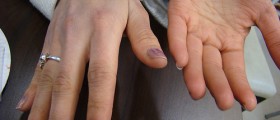
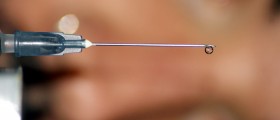












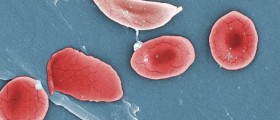





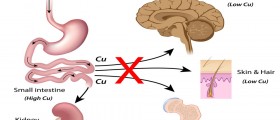
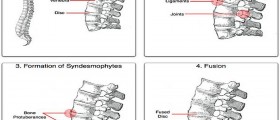



Your thoughts on this
Loading...